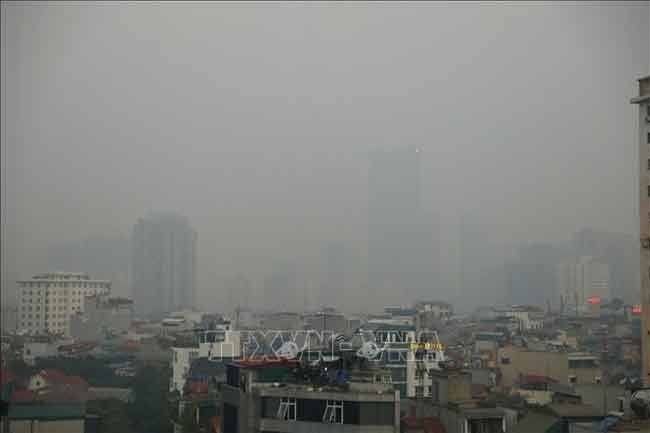Hanoi (VNA) – Expertsgathered at a conference in Hanoi on January 14 to seek ways to improve airquality in the capital city of Vietnam.
The event was jointly organized by the Vietnam Clean Air Network, the Centre of Liveand Learn for Environment and Community (Live and Learn),the Hanoi Department of Natural Resources and Environment, the World Bank (WB)and the US Agency for International Development (USAID).
The conference aimed to update activities of domestic and internationalorganisations to support Hanoi’s air quality management. It also offered achance for experts, scientists and representatives from State managementagencies and organisations to discuss action plans for air quality in 2020
Luu Thi Thanh Chi, deputy head of the Hanoi Environmental ProtectionDepartment, said to deal with air quality fluctuations, the municipal People’sCommittee has taken a wide range of solutions to improve the quality of the environmentand the air in particular. Since 2017, Hanoi has installed 10 air monitoringstations, including two fixed ones.
At present, the stations operate stably, transmitting data to the Department ofNatural Resources and Environment daily, she said.
Hanoi will invest in additional 33 air monitoring stations and caravans in2020, she added.
In a policy dialogue held the same day, President of the Vietnam Clean AirNetwork Hoang Duong Tung said Vietnam does not have enough capable air qualitytracking systems to protect people from air pollution.
The country’s economic engine HCM City, despite a recent drastic drop in airquality, does not have a single automatic air quality tracking station.
Hanoi lacks systems which canshow comprehensive data on air quality in the city centre and neighbouringprovinces.
Vehicles are estimated to contribute 30 to 50 percent of urban emissions.However, as no proper research on pollutants has been published, Vietnam hasnot developed a priority policy to limit personal vehicles.
From 2019, the country’s fuel tax will rise to the highest level of 4,000 VND (17US cents) per litre for gasoline and 2,000 VND (8.5 US cent) per litre fordiesel. The tax will bring 57.3 trillion VND (2.4 billion USD) each year to theState budget but the money will not go directly to environment protectionactivities.
Environmental protection accounts for only 1 percent of Vietnam’s State budgetexpenditure, while air pollution alone cost the country up to 5.64 percent ofits GDP in 2018.
Air pollution costs Vietnam from 10.82 billion USD to 13.63 billion USD peryear, according to research by the Hanoi-based National University of Economics(NEU).
NEU lecturer Dinh Duc Truong said the soaring air pollution was a marketfailure.
“Air pollution is an externally negative phenomenon affecting buyer decisionprocess and at the same time increasing production costs. Instead of consuminggoods which will improve their living quality, people have to spend more ongadgets to protect themselves from unhealthy air,” he said.
According to Truong, as airis a public good, meaning all individuals have to use it without paying for it,many companies tend to avoid investing into emission treatment systems toreduce expenses, leading to people not gaining enough insight into air quality,emerging hazards and how human health is impacted because of exposure to airpollution.
Only when information is provided in a timely and accurate manner can peopleperform their supervisory roles and better understand risks, he said.
He recommended accelerating green finance, investing in innovative start-upsand enhancing economic reforms to reduce air pollution.
The 2018 Environmental Performance Index published by Yale University put Vietnamat 132nd place among 180 countries. In terms of air quality, the country stood159th.
On January 14, Hanoi was once again hit by filthy air with the air qualityindex at very unhealthy levels./.






























